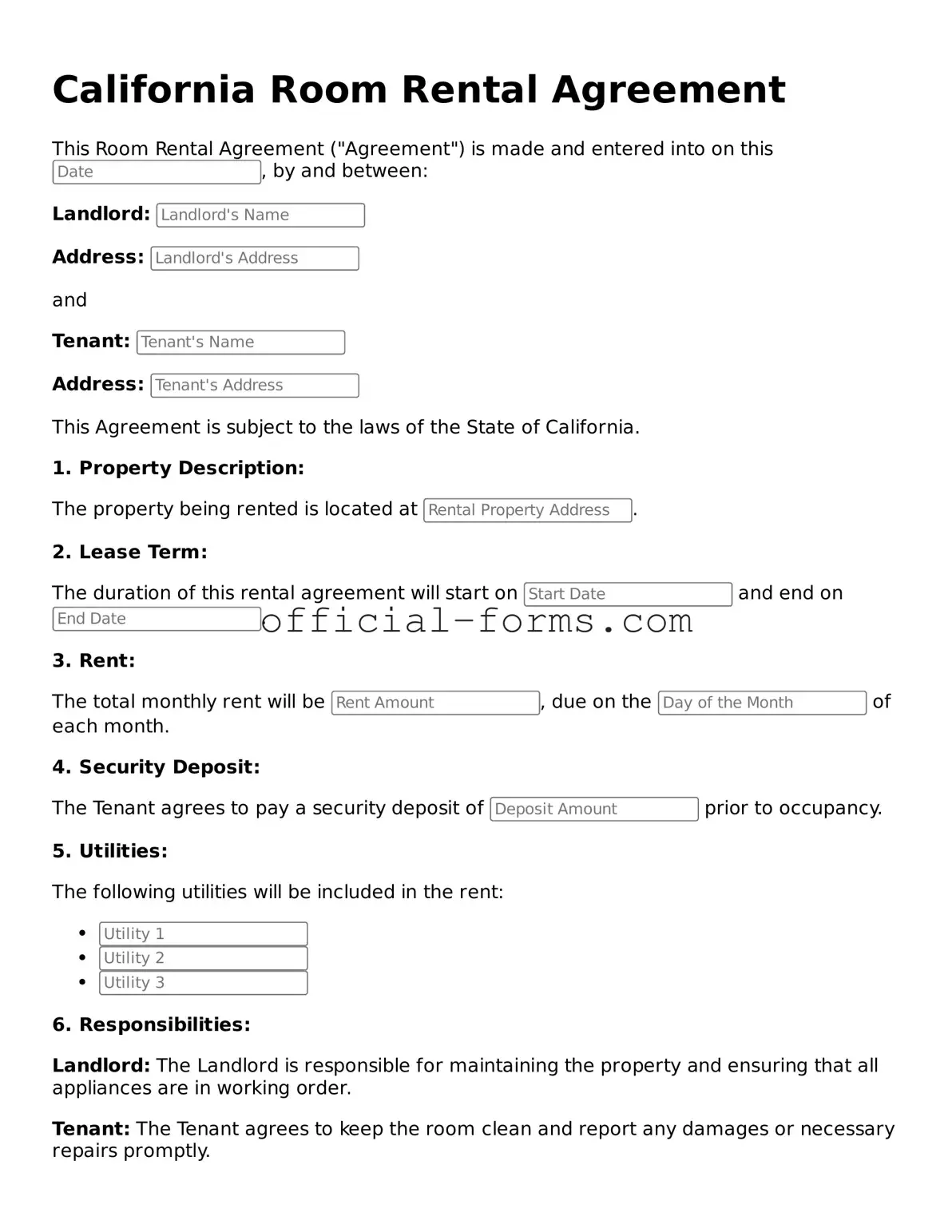Filling out a Room Rental Agreement in California is a crucial step for both landlords and tenants. However, many individuals make common mistakes that can lead to misunderstandings or legal issues later on. Being aware of these pitfalls can help ensure a smoother rental experience.
One frequent error is failing to include all necessary personal information. Both parties should provide their full names, contact information, and any other relevant details. Omitting this information can create confusion about who is responsible for the agreement.
Another mistake involves neglecting to specify the rental amount and payment terms clearly. It is essential to outline not only the monthly rent but also when it is due and acceptable payment methods. Without this clarity, disputes over payments may arise.
Some individuals forget to address the duration of the rental agreement. Whether it’s a short-term or long-term rental, stating the start and end dates is vital. This helps prevent misunderstandings regarding the lease's expiration and renewal processes.
Additionally, people often overlook the importance of detailing security deposit terms. The amount of the deposit, the conditions for its return, and any deductions should be explicitly stated. This information protects both parties and clarifies expectations.
Another common error is not including rules regarding property use. Tenants and landlords should agree on policies related to guests, pets, and maintenance responsibilities. Clear guidelines help maintain a positive living environment and prevent future conflicts.
Finally, many individuals fail to sign and date the agreement properly. An unsigned or undated document may not hold up in legal situations. Both parties must ensure that they complete this critical step to validate the agreement.
